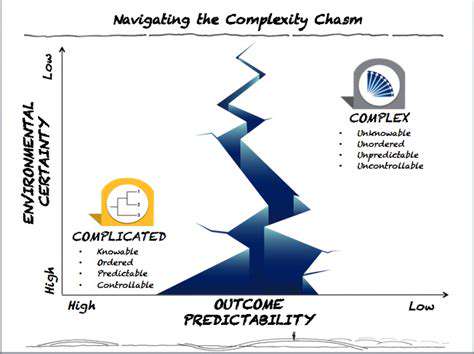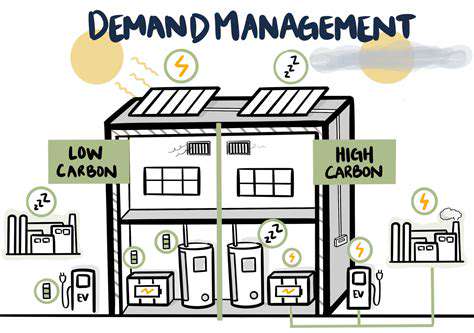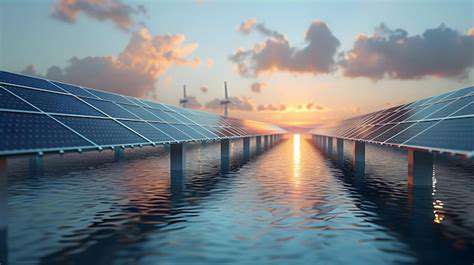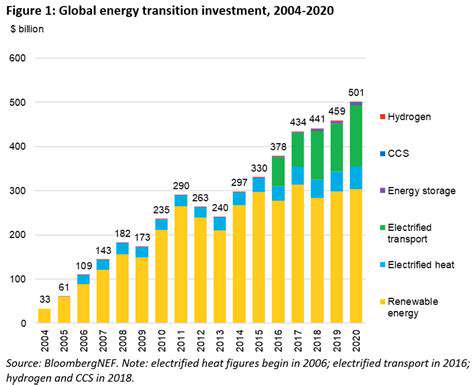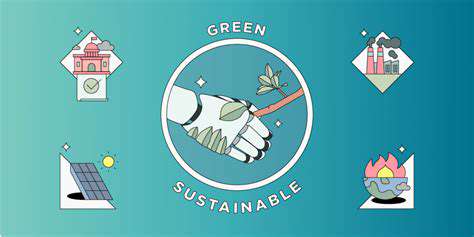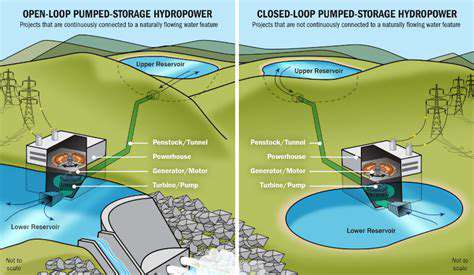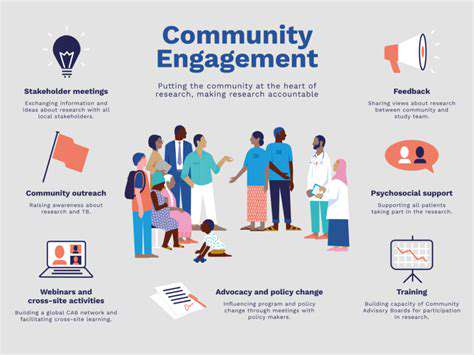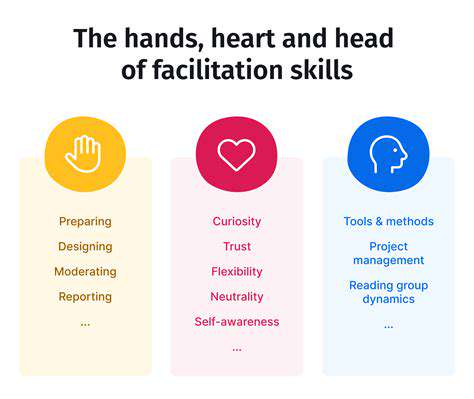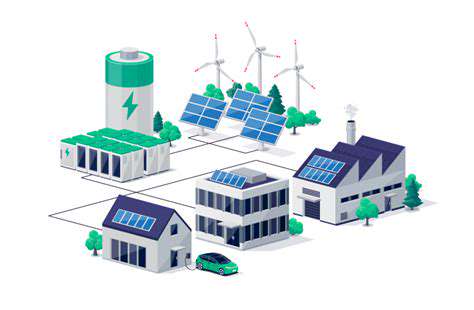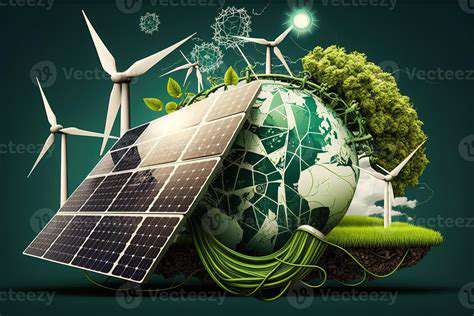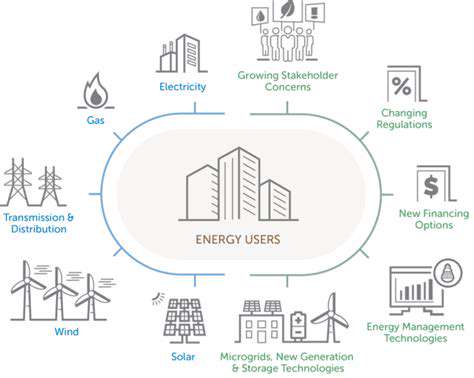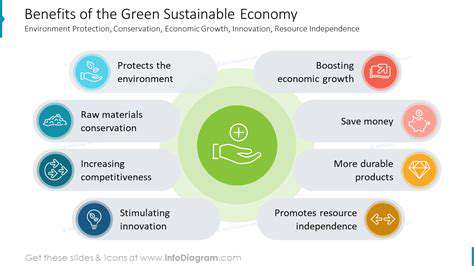Decentralized Energy and Grid Modernization: A Symbiotic Relationship
Our global energy landscape is undergoing a fundamental transformation as centralized power systems reveal their vulnerabilities. Localized energy solutions, leveraging solar arrays, micro-wind installations, and community-scale storage, present a compelling alternative that prioritizes reliability and sustainability. This movement toward distributed generation reflects society's growing demand for energy sovereignty and localized control over critical infrastructure.
The advantages of this approach extend far beyond simple power generation. By dispersing energy production across numerous nodes, communities gain protection against cascading failures while creating new economic opportunities. This model fosters innovation in energy management and encourages the development of hyper-local solutions tailored to specific environmental conditions.
Technological Breakthroughs Enabling Change
Revolutionary improvements in photovoltaic efficiency and wind turbine design have dramatically altered the economics of small-scale generation. These advancements, combined with breakthroughs in energy storage density, have transformed distributed energy from a niche concept to a mainstream solution for businesses and neighborhoods alike.
The evolution of storage technologies, particularly solid-state batteries and advanced thermal storage systems, has solved one of the most persistent obstacles to renewable adoption. These innovations allow communities to smooth out the natural variability of solar and wind resources, delivering consistent power regardless of weather conditions.
Economic Transformation Through Local Energy
The decentralization movement is sparking an economic renaissance in energy sectors worldwide. From specialized manufacturing clusters to localized maintenance networks, this transition is creating diverse employment opportunities that resist automation and outsourcing.
Neighborhood energy cooperatives are demonstrating how communities can reclaim control over their power supply while generating tangible economic benefits. These grassroots initiatives prove that energy democracy can deliver both environmental and financial returns, creating virtuous cycles of reinvestment in local infrastructure.
Environmental Impact and Carbon Reduction
Distributed renewable systems offer perhaps our most effective pathway to meaningful emissions reductions. By displacing fossil fuel generation at the source, these solutions avoid the transmission losses and efficiency penalties inherent in centralized systems. The environmental case for localized generation grows stronger with each technological improvement in renewable efficiency and storage capacity.
Grid Evolution for a New Energy Era
Modernizing our aging grid infrastructure represents both a challenge and opportunity. Intelligent distribution networks, equipped with self-healing capabilities and predictive analytics, will form the backbone of our future energy system. These adaptive grids must balance millions of distributed resources while maintaining flawless reliability - a task requiring unprecedented levels of automation and coordination.
Policy Innovation for Energy Transition
Forward-thinking legislation plays a crucial role in accelerating the energy transition. Effective policy frameworks must remove barriers to interconnection while ensuring fair compensation for distributed generation. The most successful jurisdictions are those that recognize energy decentralization as both a technical and social transformation, crafting policies that empower communities rather than protect incumbent utilities.
Overcoming Implementation Challenges
While the benefits are clear, significant hurdles remain in scaling decentralized solutions. Grid operators must develop new protocols for managing bidirectional power flows, while communities need education about their changing roles in the energy ecosystem. The coming decade will require intensive collaboration between engineers, policymakers, and citizens to build systems that are resilient, equitable, and adaptable to future innovations.
Modernizing the Grid for a Decentralized Future
The New Energy Ecosystem
Tomorrow's energy networks will function more like collaborative platforms than traditional one-way distribution systems. This transformation enables homes and businesses to transition from passive consumers to active prosumers - simultaneously producing and consuming energy based on real-time needs and market conditions.
Visualize neighborhoods where every rooftop contributes to the energy supply, where parking lots double as solar canopies, and where community storage systems balance local supply and demand. This distributed architecture creates energy webs that are inherently more flexible and fault-tolerant than traditional radial distribution models.
Built-in Resilience Against Disruptions
Decentralized networks demonstrate remarkable resistance to catastrophic failures. When extreme weather or cyber threats compromise portions of the grid, islandable microgrids can continue operating independently, maintaining power for critical services. This architectural resilience becomes increasingly vital as climate change intensifies weather-related grid stresses.
The redundancy inherent in distributed systems provides multiple fail-safes against single points of failure. When one generation source falters, others automatically compensate, often without any noticeable interruption to end users. This self-healing capability represents a quantum leap in reliability compared to conventional grid designs.
Intelligent Networks and Predictive Analytics
Next-generation grid management leverages artificial intelligence and machine learning to optimize complex, dynamic systems in real time. These smart networks continuously analyze thousands of data points - from weather patterns to appliance-level consumption - to anticipate needs and prevent problems before they occur.
Advanced metering infrastructure has evolved into a two-way communication platform that enables precise coordination between distributed resources. This digital nervous system allows the grid to automatically balance supply and demand at hyper-local levels, creating unprecedented efficiency in energy utilization.
Seamless Renewable Integration
The grid of the future must accommodate an ever-increasing penetration of variable renewable generation. This requires sophisticated forecasting tools that can predict renewable output with high accuracy, coupled with flexible demand response programs that align consumption with availability.
Innovative solutions like vehicle-to-grid technology and thermal energy storage are transforming electric vehicles and buildings into grid assets. These distributed flexibility resources help smooth renewable intermittency without requiring massive centralized storage facilities, making high renewable penetration both technically and economically feasible.
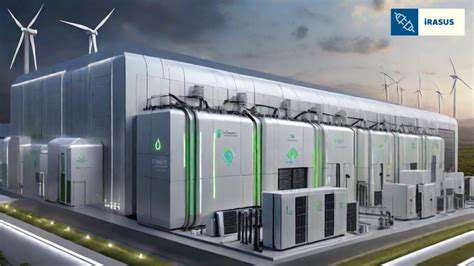
Navigating the Energy Transition

Technology Integration Challenges
The accelerating pace of innovation presents both extraordinary opportunities and complex implementation challenges. Successful adoption requires moving beyond simple technology deployment to holistic system redesign that considers human factors, regulatory frameworks, and market structures. Each technological solution must be evaluated not just for its standalone performance, but for how it enhances or disrupts the larger energy ecosystem.
Emerging technologies like advanced power electronics and blockchain-based energy trading platforms promise to revolutionize how we manage distributed resources. However, their full potential can only be realized through careful integration with existing infrastructure and thoughtful consideration of transition pathways.
Workforce Transformation
The energy transition is creating entirely new categories of employment while transforming traditional utility roles. This shift demands comprehensive retraining initiatives to equip workers with skills in renewable installation, grid-edge technologies, and energy data analytics. Regions that invest in energy workforce development will gain significant economic advantages in the emerging clean energy economy.
The environmental imperative extends beyond emissions reduction to encompass the entire lifecycle of energy infrastructure. Sustainable material sourcing, recyclability of components, and minimization of manufacturing impacts must become central considerations in technology development and deployment strategies.
Ethical Dimensions of Energy Access
As energy systems become more technologically sophisticated, we must guard against creating new forms of energy inequality. Policy frameworks must ensure that the benefits of decentralized energy - including cost savings and resilience - are accessible across all socioeconomic groups. This requires targeted programs that address upfront cost barriers and provide technical assistance to underserved communities.
The democratization of energy production raises important questions about data privacy, cybersecurity, and fair compensation for grid services. Establishing clear principles for these issues early in the transition will prevent costly retrofits of both technical systems and regulatory frameworks.
Cybersecurity in Distributed Systems
The proliferation of connected energy devices exponentially increases the potential attack surface for malicious actors. Protecting decentralized grids requires a defense-in-depth approach that combines hardware security, network monitoring, and rigorous access controls. Standardized security protocols must evolve alongside technological innovation to maintain system integrity.
Resilience planning must account for both physical and cyber threats, recognizing that distributed systems introduce new vulnerabilities even as they mitigate traditional risks. Regular stress testing and red team exercises should become standard practice for all grid operators and aggregators.
Policy Innovation for Rapid Change
Traditional regulatory models struggle to keep pace with technological disruption in the energy sector. Forward-looking jurisdictions are experimenting with regulatory sandboxes that allow controlled testing of innovative business models and technologies. These experimental frameworks help identify optimal approaches before scaling solutions across entire markets.
Legal frameworks must evolve to clarify responsibilities and liabilities in complex, multi-stakeholder energy ecosystems. Clear guidelines are particularly needed for emerging areas like peer-to-peer energy trading and community-based capacity markets.
Global Knowledge Sharing
The energy transition presents challenges that transcend national borders, requiring unprecedented international cooperation. Shared research initiatives and open data platforms can accelerate learning and prevent redundant efforts across countries and regions. Collaborative approaches to standards development will ensure interoperability while allowing for local adaptation.
Developing nations have unique opportunities to leapfrog traditional grid development and build directly toward decentralized, renewable-based systems. International partnerships can facilitate technology transfer and capacity building, creating models for sustainable energy development worldwide.
